If the fashionplate show us the ideal woman, the caricature show us the opposite. Even if it exaggerate, it still show us a glimpse on how a fashion actually looked when worn by ordinary people. It also clearly highlight what it was in a particular fashion that stood out and in that, I believe, we can get very helpful pointers on what to focus on when we try to re-create a fashion long gone. Some of the following pictures is a bit naughty.
1777. It looks like the cobblers wife has borrowed a hammer to help her tighten her stays. Her husband seems none too pleased- I wonder if he don't approve of tight stays or a woman touching his tools.
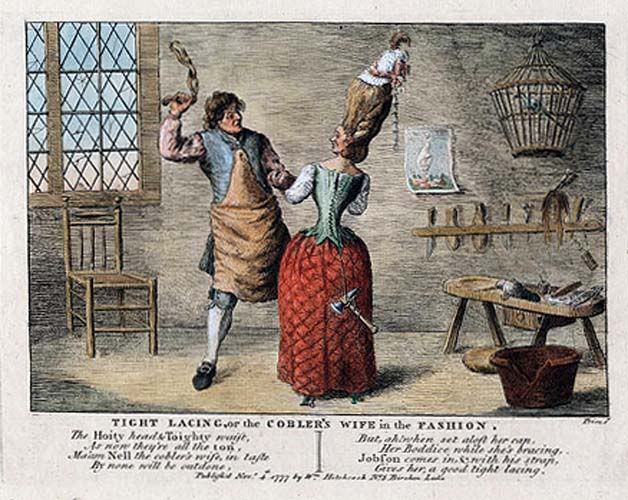
Older woman, older fashion.
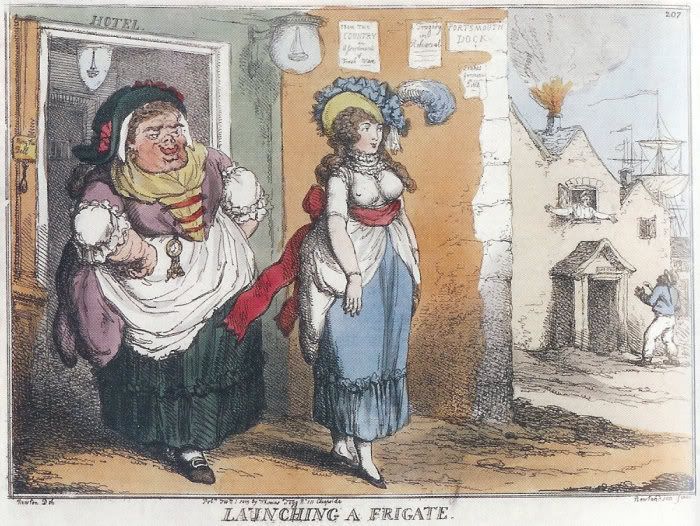
1796. Short, tab-less stays. And the eternal struggle for another body than the one you have...
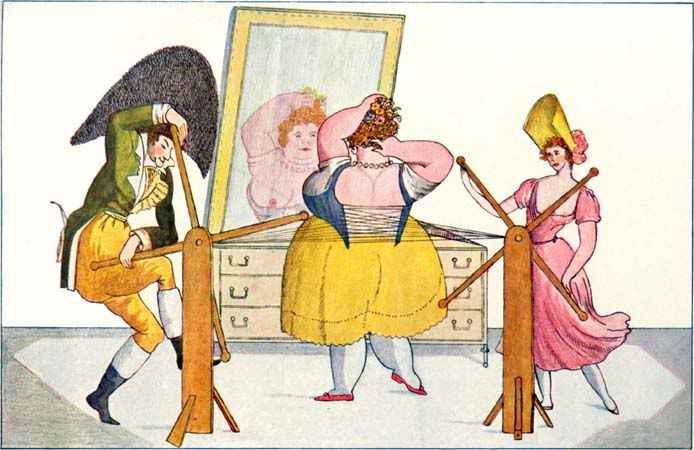
1799. Parisian winter fashion. I've no doubt that you sometimes actually did see most a woman in those clothes, especially if it rained...
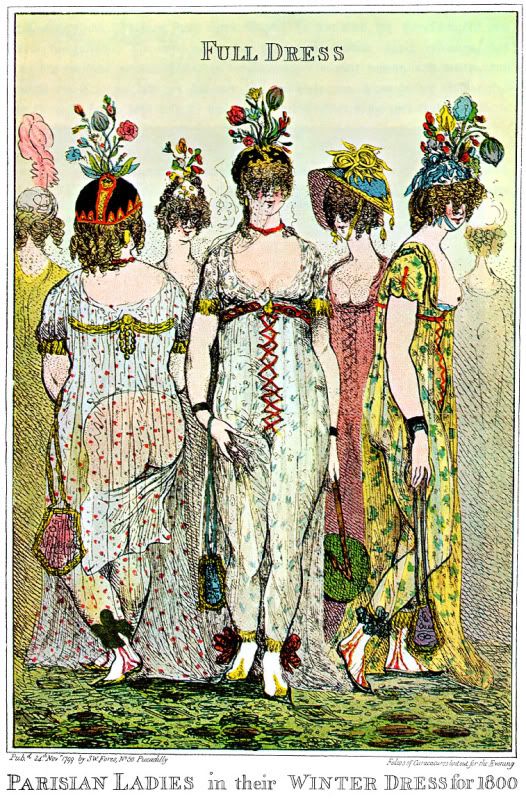
1799. Neither the very thin nor the rather fat seems to fit in these modern high-waisted fashions. :-)
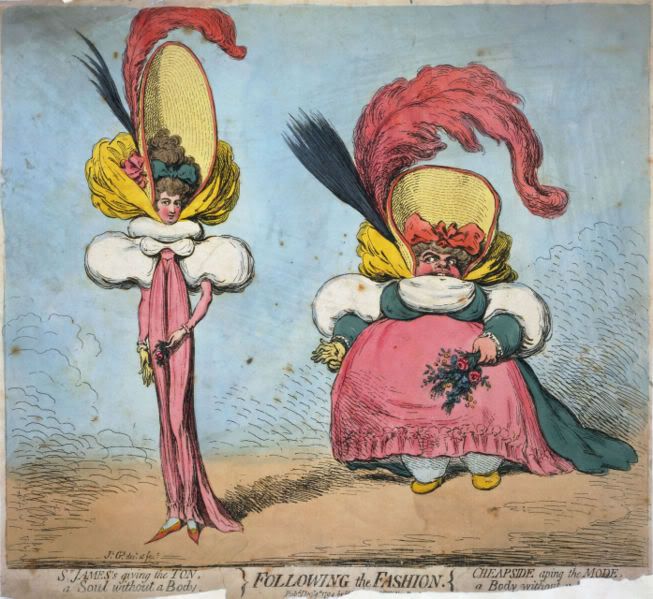
1800. “The fashionable mother”
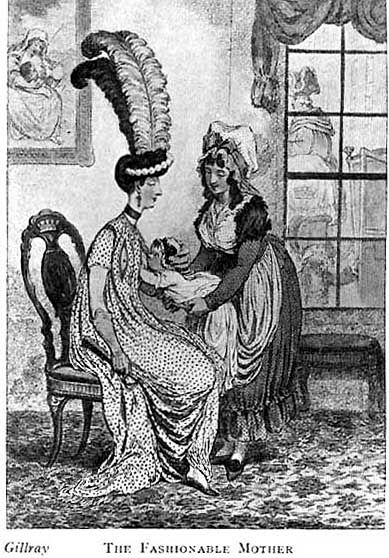
3 comments:
In regards to the first satire, it's a commentary on a woman dressing above her station (i.e. tightlacing her stays) the little saying basically mocks the cobbler's wife for trying to dress like the upper class by tightlacing her stays, when her husband sees her and then punishes her (or..beat her..) for doing something so stupid. I used this in my dissertation on stays, comfort, and tightlacing. It's a personal favorite. :)
The 1796 satire is interesting...it's style is a bit more...primitive(?) compared to the others. What country is it from? Where did you find it? I like it. :)
Yes, and I think that's why the hammer is there- she doesn't have a maid who can tighten her stays, so she has to take other means. :-)
I don't know, actually. I collect them as I find them on the web and usually only take note of the year. I can't recall that a country was named.
These comics always make me a bit sad. I guess I just don't like humor that makes fun of people!
Post a Comment